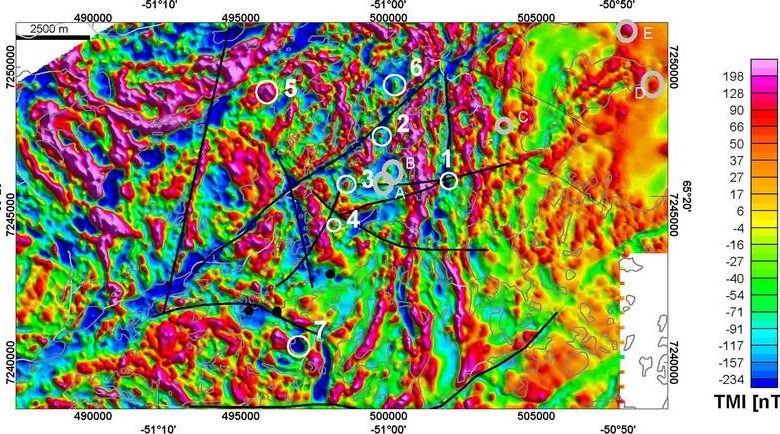All Categories
Featured
Table of Contents
Airborne Geophysical Surveys in Beechina Western Australia 2021
Much of the image includes blank locations now with little or no radar action. The "yard" wall is still revealing strongly, nevertheless, and there are continuing tips of a tough surface area in the SE corner. Time piece from 23 to 25ns. This last piece is now nearly all blank, but a few of the walls are still showing highly.
How deep are these slices? Regrettably, the software I have access to makes estimating the depth a little tricky. If, nevertheless, the top 3 pieces represent the ploughsoil, which is probably about 30cm think, I would guess that each slice is about 10cm and we are only coming down about 80cm in total.

Thankfully for us, most of the sites we have an interest in lie just listed below the plough zone, so it'll do! How does this compare to the other methods? Comparison of the Earth Resistance information (top left), the magnetometry (bottom left), the 1517ns time piece (leading right) and the 1921ns time piece (bottom left).
Geophysical Surveys in Innaloo WA 2023
Magnetometry, as discussed above, is a passive method measuring regional variations in magnetism versus a localised absolutely no worth. Magnetic susceptibility survey is an active technique: it is a procedure of how magnetic a sample of sediment might be in the existence of an electromagnetic field. How much soil is evaluated depends upon the size of the test coil: it can be very small or it can be reasonably large.
The sensor in this case is extremely little and samples a small sample of soil. The Bartington magnetic susceptibility meter with a large "field coil" in use at Verulamium during the course in 2013. Leading soil will be magnetically boosted compared to subsoils just due to natural oxidation and reduction.
By determining magnetic vulnerability at a reasonably coarse scale, we can spot areas of human profession and middens. We do not have access to a trustworthy mag sus meter, but Jarrod Burks (who helped teach at the course in 2013) has some excellent examples. One of which is the Wildcat site in Ohio.
Geophysics in Westminster Oz 2020
These towns are typically laid out around a main open area or plaza, such as this rebuilt example at Sunwatch, Dayton, Ohio. The magnetic susceptibility study helped, however, specify the primary area of occupation and midden which surrounded the more open location.
Jarrod Burks' magnetic susceptibility study arises from the Wildcat site, Ohio. Red is high, blue is low. The method is therefore of great use in specifying areas of basic occupation instead of identifying particular features.
Geophysical surveying is an applied branch of geophysics, which utilizes seismic, gravitational, magnetic, electrical and electro-magnetic physical methodologies at the Earth's surface to measure the physical residential or commercial properties of the subsurface - Geophysical Surveys - Method Types And Work Tehniques I ... in Thornlie Australia 2021. Geophysical surveying techniques normally determine these geophysical residential or commercial properties along with anomalies in order to assess various subsurface conditions such as the existence of groundwater, bedrock, minerals, oil and gas, geothermal resources, spaces and cavities, and a lot more.
Table of Contents
Latest Posts
How To Become A Geophysicist in Pickering Brook Aus 2023
What Does A Geophysicist Do? Role & Responsibilities in Wembley Downs Western Australia 2023
Geophysical Surveys As Landscape Archaeology in Shelley WA 2021
More
Latest Posts
How To Become A Geophysicist in Pickering Brook Aus 2023
What Does A Geophysicist Do? Role & Responsibilities in Wembley Downs Western Australia 2023
Geophysical Surveys As Landscape Archaeology in Shelley WA 2021